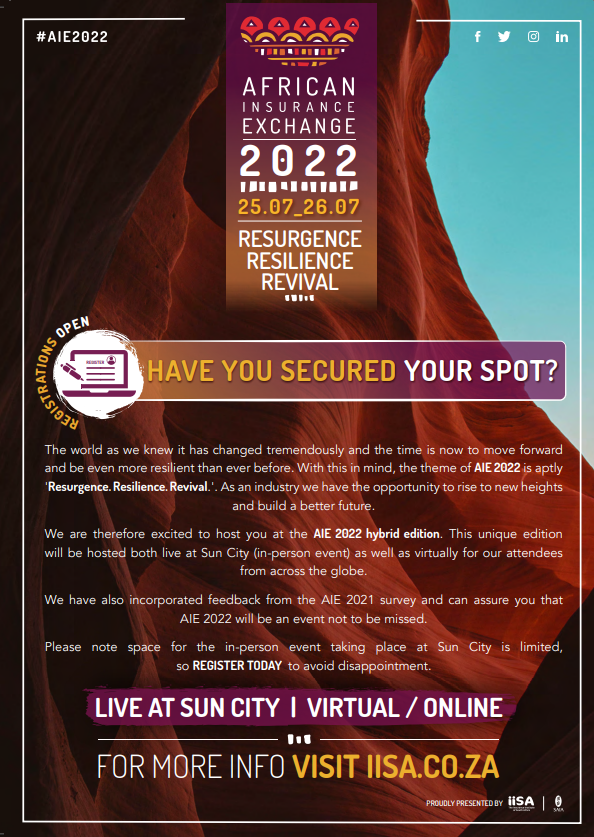Estelle Bond, Senior Business Development Manager in the Marine team at Hollard Insure.

Getting goods from one place to another is risky business, even without the challenges of a global pandemic. While Covid-19 has had a significant impact on supply chains and shipping, it has not been the only factor affecting the Marine insurance industry over the past few years.
Events like natural disasters and storms, and man-made disasters such as the 2020 port explosion in Beirut, last year’s blocking of the Suez Canal, and the July 2021 looting and civil unrest in KwaZulu-Natal and Gauteng, have all increased both the risks and the costs associated with Marine insurance.
So, what does the maritime industry look like right now? And what do importers, exporters and consumers need to know about Marine insurance in these challenging times?
Lockdowns across the world’s economies have turned trade as we know it upside down. Without access to labour and production, trading patterns have been heavily skewed towards essential goods. But Covid-19 has shown how resilient the maritime industry really is. The flow of goods never stopped – it just shifted from non-essential to essential goods.
The challenges within the industry have extended to seafarers, who have been stranded away from their families for extended periods of time, yet have continued to play a pivotal role as essential frontline workers – responsible for keeping global supply chains working and products flowing, even in the face of lengthy delays at ports and inland borders.
Nonetheless, all of this has had an impact on the cost of insurance, with importers and exporters likely to have seen increases in their insurance premiums.
High-target goods will be priced higher than goods that are not. Also, the rise in truck hijackings in South Africa inevitably leads to increased premiums or excesses, because such events cause losses of millions, or even billions, of dollars – placing strain on the reinsurers who provide capacity to local insurers, which in turn drives up the cost of insurance.
Another effect of the pandemic is that the prices of shipping containers have more than quadrupled due to the shortage of containers – affecting both the cost of insurance overall and that of reinsurance.
Ultimately, these costs are passed down to the consumer via the cargo owner and the industry.
Transporting cargo, or goods traded internationally, is a risky business, as much can go wrong: goods can be lost or damaged at various stages in the transport chain, or when loaded onto ships. Fires can occur or ships can strand, sink or run aground – not to mention collisions, overturning, derailments or theft.
It is important to protect the value of the sale by buying the right insurance cover to protect the goods against physical loss or damages. Container loads are worth millions, and the financial burden of having to replace or repair the goods can potentially bankrupt a company if something goes wrong. It is, therefore, makes sense for importers and exporters to protect their moving assets, as well as their businesses.
Apart from cargo and goods, Marine insurance also covers two other main product lines: hull insurance and marine liabilities.
Hull insurance covers private individuals who own pleasure craft such as yachts, ski boats or jet skis for their personal use, or commercial craft, owned by business owners to generate revenue, such as fishing vessels or dive charters.
The marine liabilities product line covers the responsibility of stevedores, charterers or ship repairers under their contractual obligations, for example where a company might incur liability to another party during the course of its business activities.
Specialist advice
Marine insurance is complex and litigation-heavy, Bond stresses. So, ensuring “the human connection” and having a trusted adviser with a proven track record and solid marine portfolio are vital.
Your broker relationship is critical. You need specialist advice to make sure you have the cover you need, and to have someone demystify the terminology and the jargon unique to the marine product.
You really need to assess whether the broker you are choosing is the right fit, so they can provide you with the correct advice, and explain all the intricacies of the policy and fine print.
So, what kind of conversation should you have with your broker?
Before you ask what is covered, you should ask what is not covered, and why. If you know what’s not covered, you can adopt risk-mitigation strategies, because the worst thing is to be told upon claiming there is no payment because of something in the fine print.
Reflect on the quality of the communication between you and your broker. How proactive has your broker been during the pandemic? Have they alerted you to heightened risk unique to the context of the pandemic? For example, have they recommended that you review your limits of exposure as goods accumulate in ports or elsewhere and the value exceeds the policy limits?
Business owners must bear in mind that losses caused by delays are not covered under a traditional insurance contract. With hundreds of container ships full of import products stuck offshore, has your broker brought this to your attention, enabling you to consider alternate strategies to reduce costs due to delays or other factors?
Considering this new risk landscape, if importers and exporters were hesitant about purchasing Marine insurance previously, they should review their thinking.


